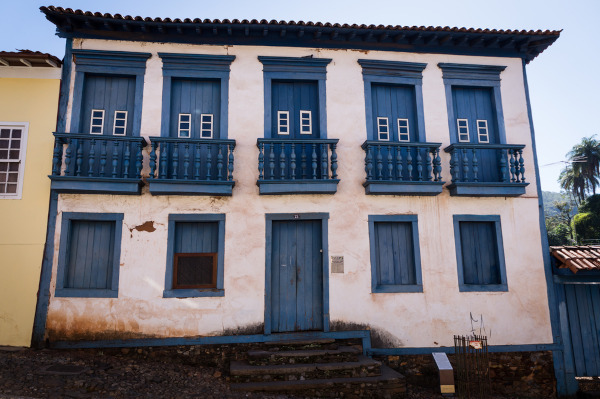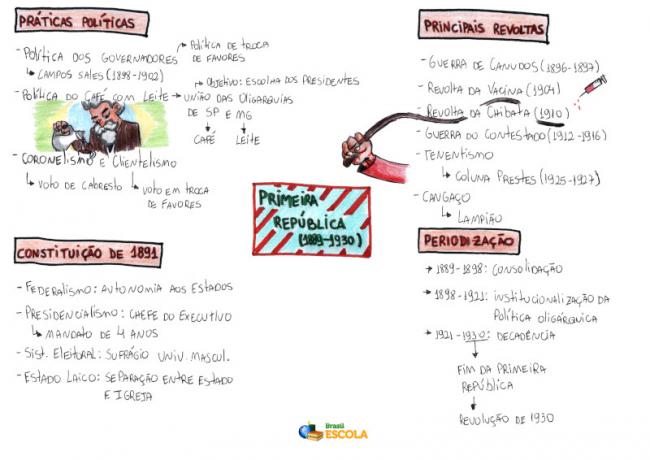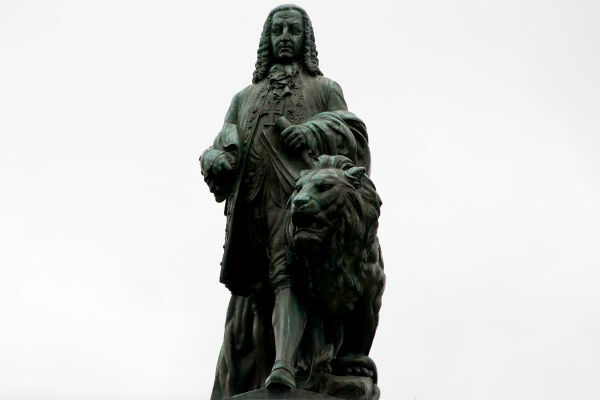Manuel Borba Catwas a Girl Scout who participated in expeditions that penetrated the Brazilian hinterland in search of precious metals and enslaved labor. He was responsible for the death of the general manager of mines Rodrigo de Castelo Branco.
Escaping so as not to be arrested, Borba Gato reached the region of vbesides the rio Doce and discovered gold mines. He traded his freedom in exchange for handing over these mines. In addition to the pardon, Borba Gato managed to be appointed to public positions in the administration of mines. More than two centuries after his death, his actions spark arguments.
Read too: Brazil wood – first raw material explored in the colony
Cat Borba Summary
Borba Gato was born in 1649 and participated in the expeditions of his father-in-law, Fernão Dias Paes, towards the interior of Brazil.
His participation in the nobleman's death d. Rodrigo de Castelo Branco made him a fugitive, living for many years in the region of the Doce river valley, where he discovered new gold mines.
He negotiated with the Portuguese Crown the pardon of his crime and was appointed to the administration of the village of Sabará.
Borba Gato died in Sabará, in the year 1718.
His actions as a Girl Scout are targets of homage and criticism to this day.
Do not stop now... There's more after the advertising ;)
Borba Gato's early years and youth
Manuel de Borba Cat born in 1649, the date or place is not known for sure of her birth. He was the son of João de Borba Gato and Sebastiana Rodrigues. In 1670, married Maria Leite, daughter of pioneer Fernão Dias Paes, with whom he had three children: Francisco Tavares, Francisco de Arruda and Francisco Duarte de Meireles.
Borba Gato's participation in the father-in-law's banners
At flags were private expeditions that came out of São Paulo towards the interior of Brazil in search of precious metals and enslaved labor. With the sugar production crisis in the North East, at the end of the 17th century, the colonists invested in country expeditions to discover the interior of the colony and explore its riches. In addition to the flags, other expeditions were organized, such as entries, which were financed by the Portuguese Crown and left the coast towards the interior.
The scouts were responsible for the opening of the first roads that left the vSão Paulo from Piratininga towards the interior from Brazil. They had the support of some Indians who knew the region, which facilitated access. Several people from São Paulo invested in the flags and organized expeditions that penetrated into the until then unknown forests in search of the long-awaited gold and Indians to be enslaved. Bartolomeu Bueno da Silva, Raposo Tavares, Fernão Dias are some of the best known pioneers.
Borba Gato participated in his father-in-law's expeditions between 1674 and 1681. One of them was the search for the Sabarabuçu mountains, believed to have many emeralds and silver.
Video lesson about Brazil Colony: flags
Borba Gato and the murder of Castelo Branco
With the discovery of gold in the region of the mines, the people of São Paulo wanted exclusivity in the exploration of precious metals because they were the first to arrive at the site. However, as news of the discovery of gold in Brazil spread quickly, countless people headed to the mines in search of wealth. It didn't take long for the first conflicts between São Paulo and foreign explorers, coming from other parts of the colony or from Portugal, happened. THE War of Emboabas it was caused by this dispute for the exploitation of the gold mines.
Upon learning of the news of the discovery of gold in Brazil, the crown forPortuguese company decided to manage the exploration of precious metals. For this, he appointed administrators who would carry out the orders of the Portuguese king in the interior of Brazil. In many cases, carrying out these orders clashed with the interests of mine operators, which led to misunderstandings and even deaths.
A remarkable fact in the life of Borba Gato was the murder of the general administrator of the minas, the nobleman d. Rodrigo de Castelo Branco. The two fell out, and Borba Gato prepared an ambush against him on the road that led to the village of Sumidouro, on August 28, 1682. The nobleman was murdered, and Borba Gato had to flee to avoid punishment.
Escape from Borba Gato to the hinterland
It was hidden for many years in the region of the Doce River and Piracicaba River valleys, hitherto unknown places. By living in hiding, Borba Gato kept searching for gold and discovered the precious metal in the Velhas river. Even as a fugitive, he kept in touch with his family in São Paulo and he negotiated a pardon from the king for the crime committed.. However, this pardon was conditional on the announcement of the mines he discovered while he was at large.
Liberty of Borba Cat
In October 15, 1698, the charter that pardoned Borba Gato was published of his crime and his appointment to the post of lieutenant. The Bandeirante met with Governor Arthur de Sá Menezes and indicated where there were gold mines in abundance, in the region of the Velhas River. The large amount of gold found in the region pointed out by Borba Gato made him receive forgiveness by the death of d. Rodrigo de Castelo Branco. After this pardon, he began to work in the administration of mines.
See too: Inconfidência Mineira – a separatist revolt that took place in Minas Gerais
Borba Gato as superintendent of the gold mines
Cat Borb It was named lieutenant general of mact and organized the collections in the village of Sabará. In addition to this region, the pioneer explored mines in the regions of the Grandes, das Mortes and Sapucaí rivers. He has shown himself to be efficient in managing mines through road maintenance and being a strict judge, avoiding the smuggling of precious metals. In addition, Borba Gato sought to help family members who had lost a loved one.

Cat Borba's Death
Cat Borb died in 1718, when he held the position of ordinary judge of the village of sabara, in Minas Gerais. In the city of Minas Gerais, there is a monument that remembers his memory and his passage through that region.
Controversies and the statue of Borba Gato
The people from São Paulo value the actions of the pioneers, and, over time, they built statues and monuments, and named highways and avenues after the leaders of the flags who entered the Brazilian hinterland in search of gold and precious metals. It's a way of extol the historic achievements of those who left São Paulo to explore the Brazilian interior and found precious metals.
In Santo Amaro, in the metropolitan region of São Paulo, a statue of the pioneer Borba Gato was built in 1963, made by the sculptor Júlio Guerra, for the commemorations of the IV centenary of the foundation of the city. In recent years, the statue has been the target of protests because of the practices carried out by the pioneer while in the mine region.
On July 25, 2021, a group of protesters set fire to the statue. in an act that contested the homage to Borba Gato. Reactions were immediate, between support and rejection, mainly on social media. Supporters argued for the violence carried out by the pioneer in his expeditions. Those who criticized defended the thesis that one cannot judge a historical figure based on elements of the present.
Image credits
[1] Alf Ribeiro / Shutterstock
[2] Deni Williams / Shutterstock
By Carlos César Higa
History teacher


